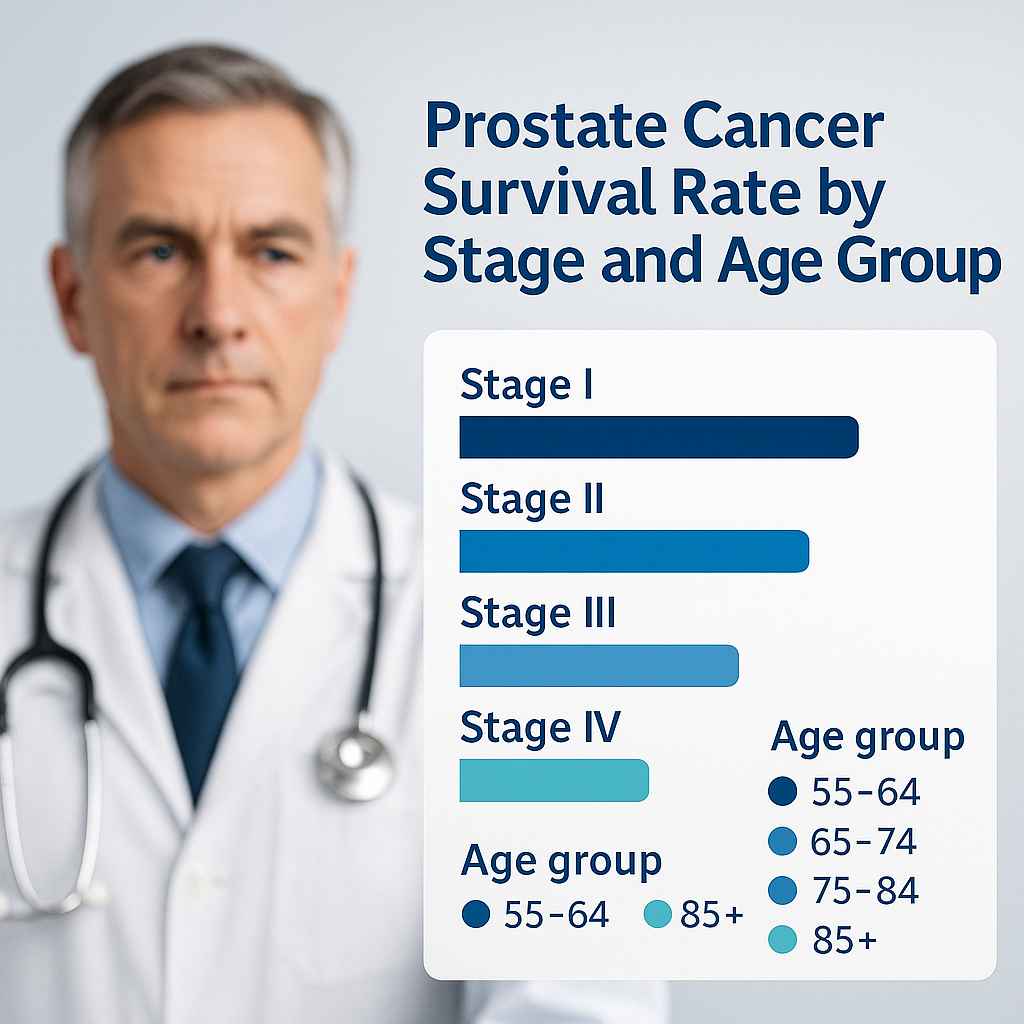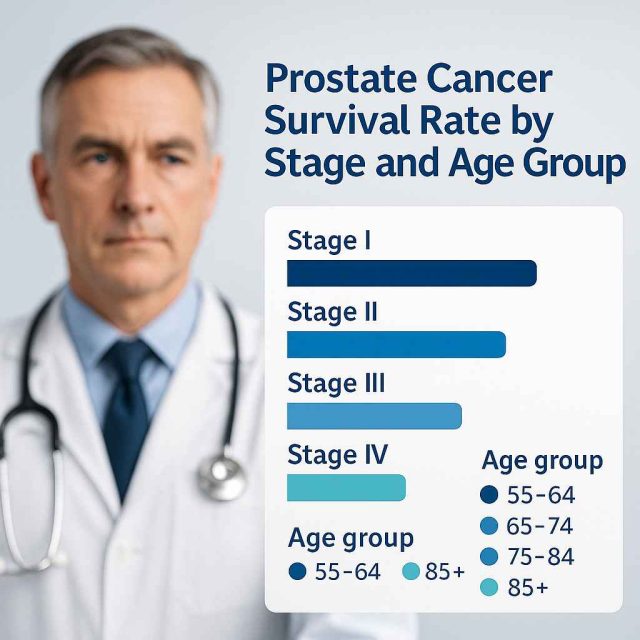
Prostate cancer is one of the most commonly diagnosed cancers in men, especially those over the age of 50. Understanding the prostate cancer survival rate can offer clarity and comfort to patients and their families navigating this journey. But how do these survival rates differ depending on the stage of the disease or the age of the person diagnosed? Let’s break it down and explore the key insights that matter most.
Table of Contents
- Understanding Survival Rates: What They Really Mean
- Survival Rate by Stage: Localized, Regional, and Distant
- How Age Affects the Prostate Cancer Survival Rate
- Factors That Influence Survival Outcomes
- Conclusion and FAQs
Understanding Survival Rates: What They Really Mean
The prostate cancer survival rate refers to the percentage of men who are still alive after a certain number of years following a prostate cancer diagnosis. Most commonly, this statistic is presented as a five-year relative survival rate. It compares the survival of men with prostate cancer to that of men in the general population without the disease.
According to the American Cancer Society, the overall five-year relative survival rate for prostate cancer in the United States is about 97%. This high figure largely reflects early detection and significant advances in treatment, including robotic prostatectomy, intensity-modulated radiation therapy (IMRT), and targeted hormonal therapy options like Zytiga (abiraterone) and Xtandi (enzalutamide).
However, survival rates are not one-size-fits-all. They vary widely depending on several factors, most notably the stage at which the cancer is diagnosed and the age of the patient.
Survival Rate by Stage: Localized, Regional, and Distant
One of the most important factors influencing prognosis is the stage of cancer at diagnosis. The prostate cancer survival rate improves significantly when the disease is detected early.
Localized stage refers to cancer that is confined to the prostate. At this stage, the five-year relative survival rate is nearly 100%. This excellent prognosis is due to the limited spread of cancer and the effectiveness of treatments like surgery and radiation.
Regional stage describes cancer that has spread to nearby tissues or lymph nodes. Even at this point, the five-year survival rate remains close to 100%, which underscores how treatable the disease can still be with options like radiation and hormone therapy.
Distant stage or metastatic prostate cancer means the cancer has spread to distant parts of the body, such as bones or other organs. Here, the five-year relative survival rate drops to about 32%. While still significant, it reflects the increased complexity of treating cancer at this stage. Treatments may include a combination of chemotherapy, immunotherapy, and newer agents like Pluvicto (lutetium Lu 177 vipivotide tetraxetan).
For more insights into managing advanced disease, explore our top articles on prostate cancer.
How Age Affects the Prostate Cancer Survival Rate
Age is another key factor influencing survival rates. Younger men tend to fare better, largely because they are more likely to be diagnosed at an earlier stage and are often healthier overall.
Men under 55 diagnosed with prostate cancer often have localized disease and a survival rate approaching 100%. These individuals are also better candidates for aggressive treatments, which further improves outcomes.
In contrast, men over 75 may face additional health complications that can complicate both diagnosis and treatment. The presence of other conditions like cardiovascular disease or diabetes can reduce the body’s ability to respond to therapy. That said, many older men with slow-growing tumors may not require immediate treatment and can benefit from active surveillance.
Age-specific screening and tailored treatment strategies are essential. Seeking timely medical advice from a specialist is crucial. If you’re exploring options, Healthcare.pro can help connect you with the right professionals.
Factors That Influence Survival Outcomes
Several other variables impact a man’s chances of surviving prostate cancer beyond stage and age. These include:
Gleason Score and PSA Level: These metrics assess the aggressiveness of the tumor and its likelihood to spread. A higher Gleason score or PSA (prostate-specific antigen) level typically indicates a poorer prognosis.
Genetics and Family History: Men with a family history of prostate cancer or certain genetic mutations (like BRCA1 or BRCA2) may be at higher risk for aggressive disease.
Lifestyle and Overall Health: Diet, exercise, and comorbidities play a substantial role. Men who lead healthy lifestyles often have better treatment outcomes.
Access to Care: Early detection through regular screening is critical. Men with better access to healthcare tend to be diagnosed earlier and treated more effectively.
In today’s digital landscape, awareness and education are critical. Digital health content strategies from platforms like eHealthcare Solutions are helping make life-saving information more accessible to both patients and providers.
Conclusion and FAQs
The prostate cancer survival rate remains one of the most encouraging among cancers, especially when diagnosed early. Localized and regional stages offer excellent outcomes, while distant-stage prostate cancer still benefits from advanced therapies. Age, overall health, and timely medical attention all contribute to survival odds.
Frequently Asked Questions
What is the average survival rate for prostate cancer?
The average five-year relative survival rate is about 97%, but this varies depending on the stage at diagnosis.
Does age impact prostate cancer survival?
Yes, younger men often have better outcomes due to earlier detection and fewer health complications.
Is metastatic prostate cancer curable?
It is not usually curable, but it is treatable. Many men live for years with metastatic disease using modern therapies.
What are the signs of advanced prostate cancer?
Symptoms may include bone pain, fatigue, weight loss, and difficulty urinating. Regular screenings are essential for early detection.
How can I improve my chances of surviving prostate cancer?
Early detection, a healthy lifestyle, and access to quality medical care are key factors in improving survival.
This content is not medical advice. For any health issues, always consult a healthcare professional. In an emergency, call 911 or your local emergency services.
.



